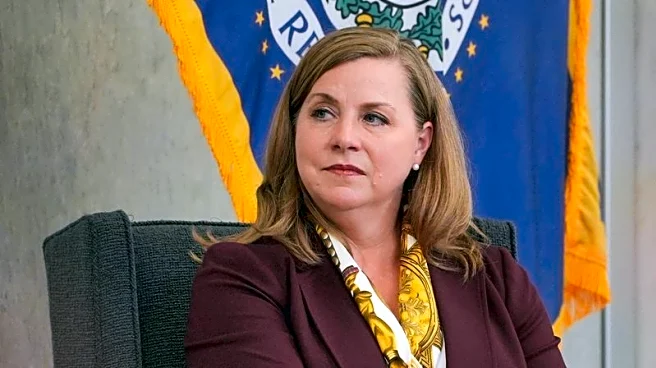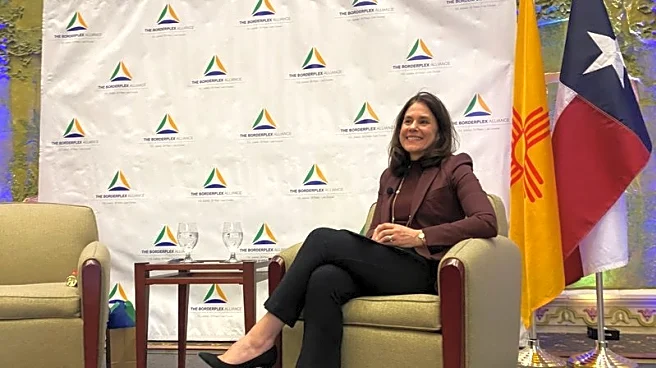What's Happening?
Federal Reserve Bank of Dallas President Lorie Logan has called for a modernization of the central bank's approach to managing money market conditions. Logan suggests shifting from the traditional federal funds lending market to targeting the tri-party general collateral rate (TGCR), which is more active and vibrant. This proposal comes as the Federal Reserve faces challenges in maintaining its interest rate targets due to liquidity conditions and the ongoing drawdown of its balance sheet. Logan emphasizes that the change is technical and does not broadly impact monetary policy, but aims to provide more stable control over money market rates.
Why It's Important?
The proposed shift in the Federal Reserve's rate control strategy is significant as it could lead to more stable and predictable money market conditions. By targeting the TGCR, the Fed aims to mitigate risks associated with the fragile connections in the current system, potentially preventing sudden disruptions. This change could impact financial institutions and markets by providing a more reliable framework for interest rate management, influencing lending, borrowing, and overall economic activity. Stakeholders in the financial sector may benefit from reduced volatility and improved rate control, enhancing confidence in monetary policy execution.
What's Next?
If the Federal Reserve decides to implement this change, it will likely provide advance notice to market participants to ensure smooth transitions. The timing of such a shift would ideally occur when markets are stable, allowing for adjustments without causing disruptions. The Fed may also need to refine its tools and operations to accommodate the new target rate, ensuring effective control without frequent or complex interventions. Stakeholders, including banks and financial institutions, will be closely monitoring these developments to adapt their strategies accordingly.











